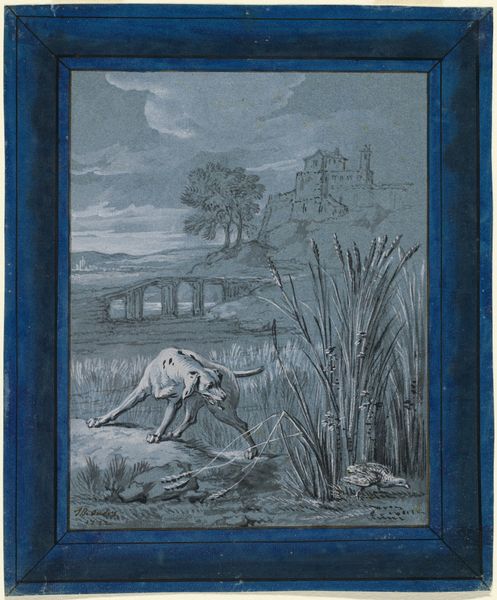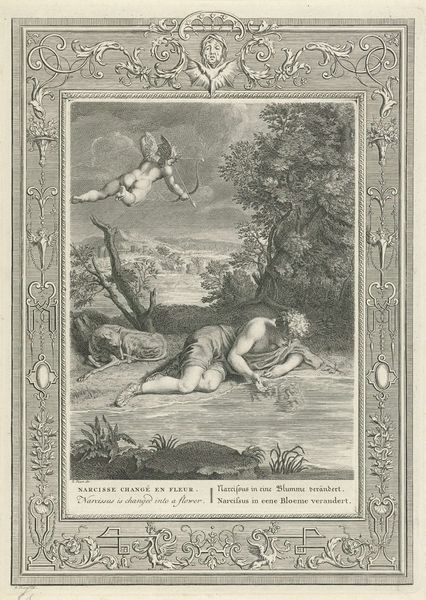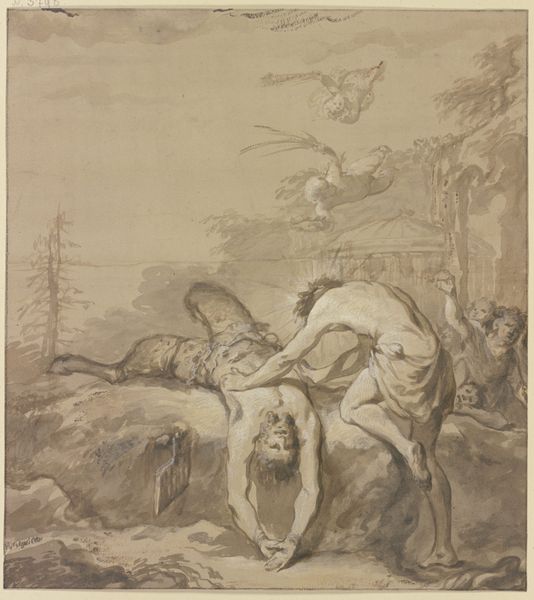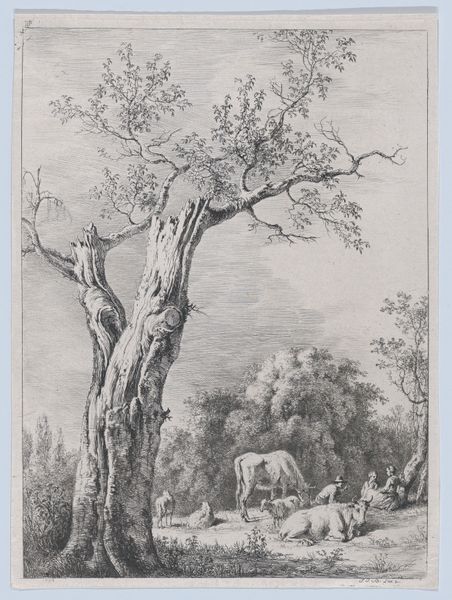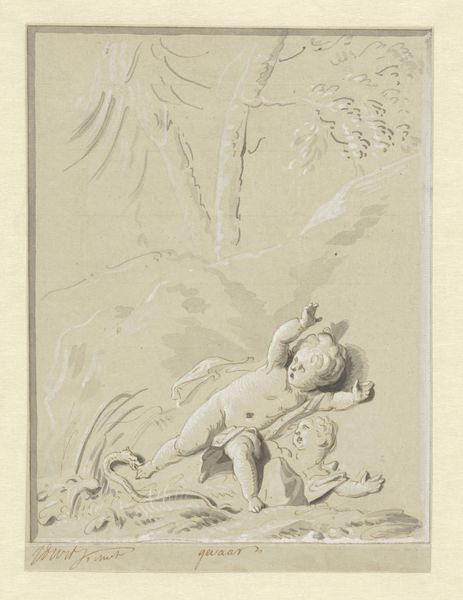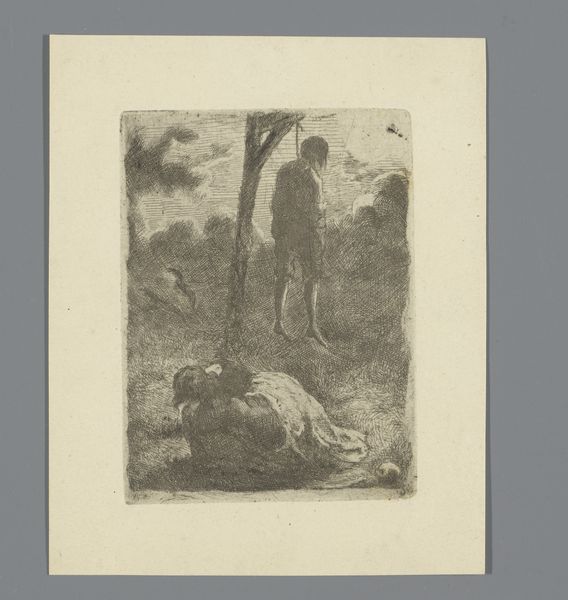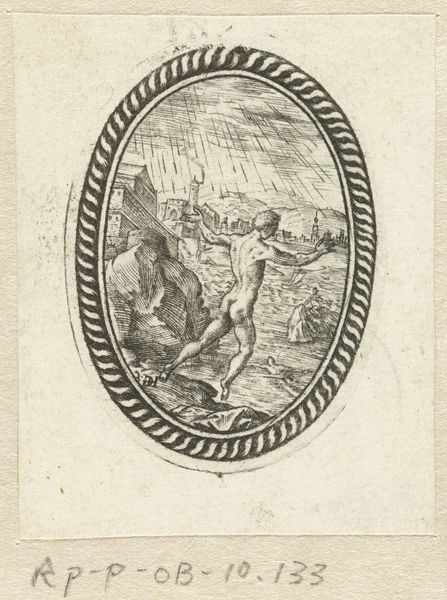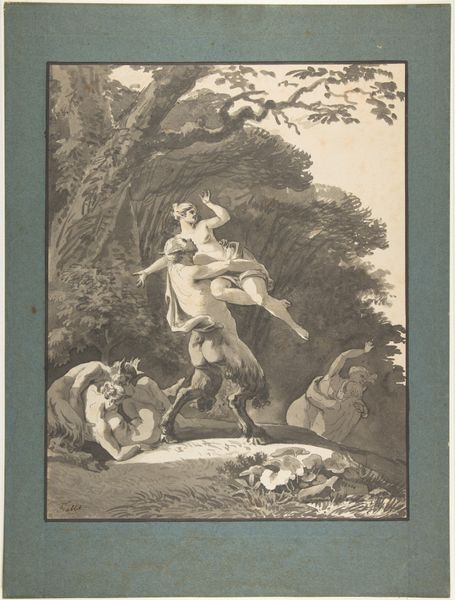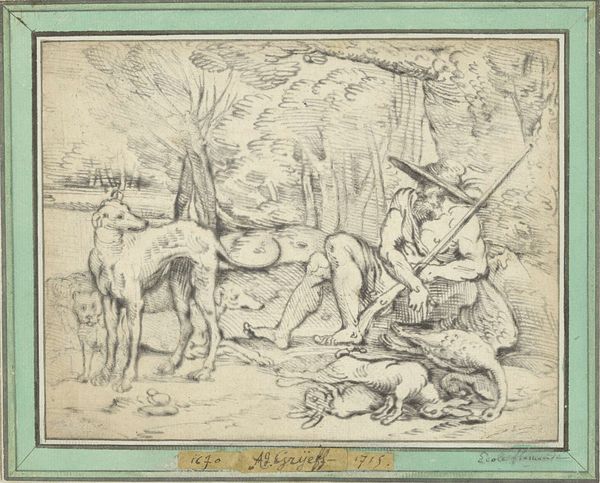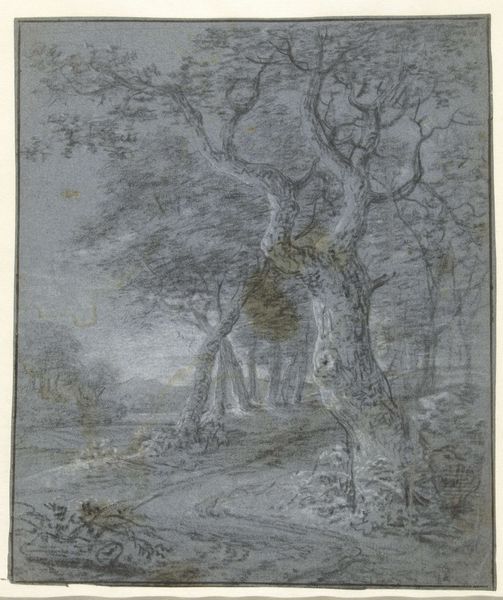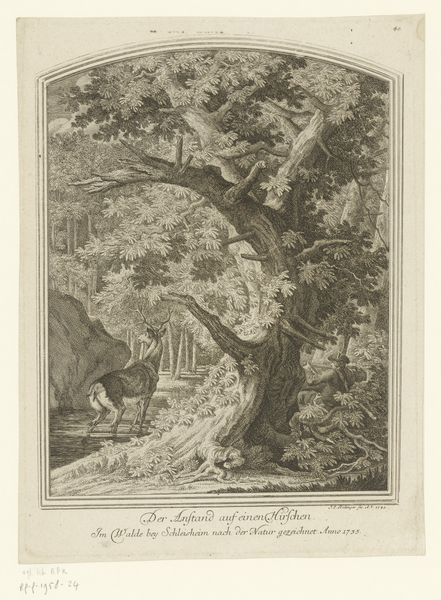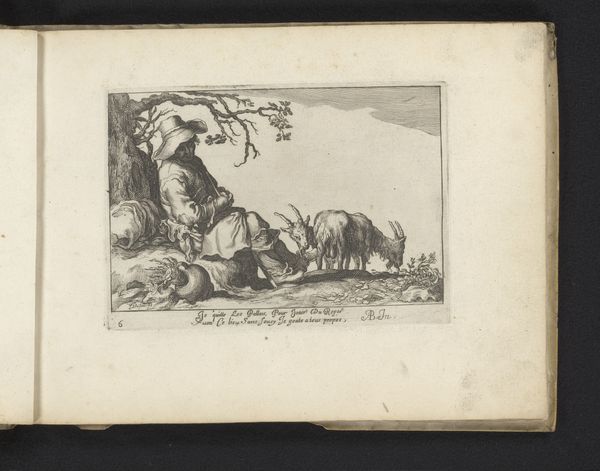
Dimensions: 311 × 259 mm
Copyright: Public Domain
Editor: We’re looking at "The Sick Stag" created in 1733 by Jean-Baptiste Oudry. It's made with mixed media, including ink and gouache, on paper. It strikes me as quite bleak and solitary, with a sense of inevitable demise permeating the scene. What’s your interpretation of it? Curator: Well, consider the role of hunting in 18th-century aristocratic society. It wasn't merely a sport; it was a carefully constructed social performance laden with political undertones. Oudry, as a painter associated with the court, was deeply enmeshed in this culture. Think about what it meant to portray a sick, vulnerable stag – a creature usually celebrated for its power and majesty. Editor: So, it's less about a straightforward depiction of nature and more about... what exactly? Is it a commentary? Curator: Precisely. Is Oudry subtly critiquing the excesses of the hunt? Or is he perhaps commenting on the fragility of even the most powerful figures within the court itself? The visual language of Romanticism was not yet fully developed but was starting to take shape. The 'picturesque' style that was rising emphasized natural beauty but within specific social constructs. Is it simply romanticizing the natural world or making some reference to how court life was often full of pitfalls? The controlled lines contrast sharply with the subject matter's inherent chaos. It leaves us contemplating the artifice inherent within seemingly natural settings and power constructs. Editor: That gives me a lot to think about – that even seemingly simple images were steeped in these societal complexities. Thanks for providing context! Curator: My pleasure. Hopefully this approach gives a much deeper read into the politics and role that images played in society.
Comments
No comments
Be the first to comment and join the conversation on the ultimate creative platform.

